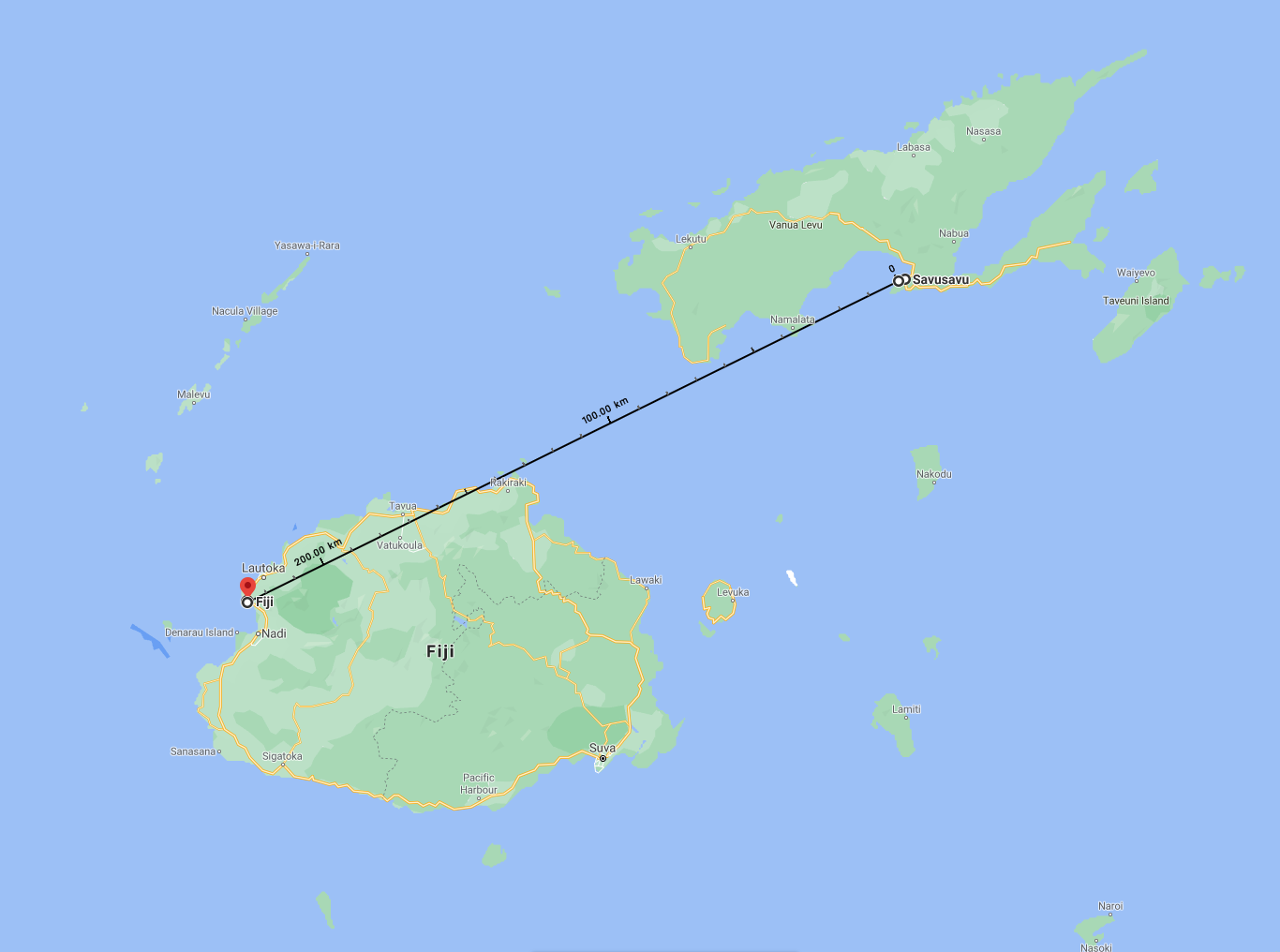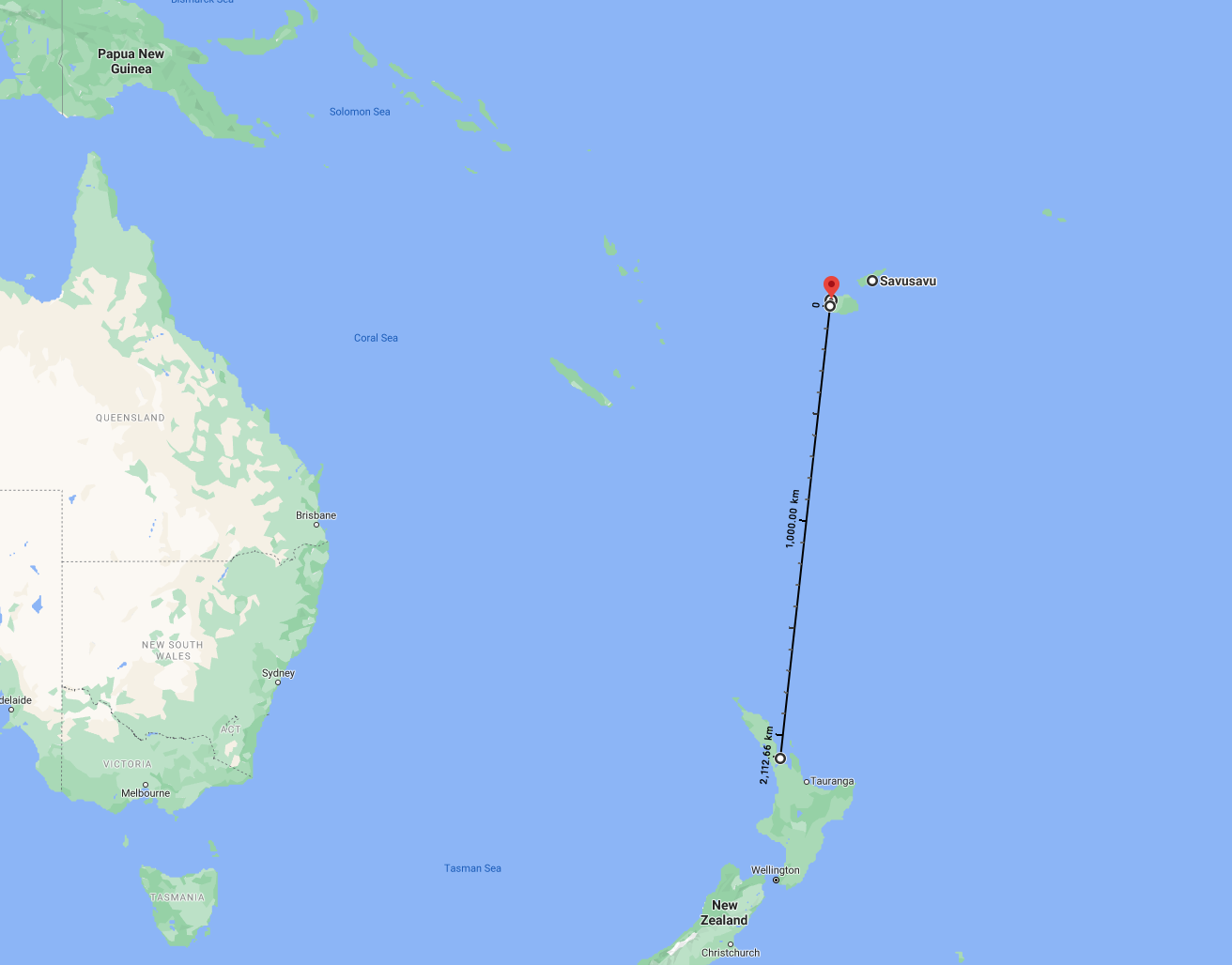
Eyewitness Reports on Cyclone Yasa’s Fury
Latitude 38 editor-at-large Andy Turpin was in touch with Adam Wade, manager of Fiji’s Vuda Point Marina, and reports they’ve had quite the challenging year. In March, while visiting friends and family in Australia, Wade suddenly found himself unable to return home to Fiji due to the nationwide COVID-19 lockdown. It was more than five months before he finally got back to his home and business on Viti Levu — just in time for the South Pacific’s cyclone season. As reported earlier, Fiji got walloped last week by Cyclone Yasa, one of the most powerful storms ever recorded in the western South Pacific.
Among international cruisers, Vuda Point is famous for protecting sailboats from cyclone damage by lodging their keels in trenches lined with tractor tires. But as Yasa passed, luck apparently played an equally important role. Wade reports, “We were very lucky, as the eye of the cyclone moved north of us and didn’t affect us directly. The top [wind-] speed recorded by one of the yachts [at Vuda] was 48.5 knots. Relatively mild. We are feeling for our friends up north though. The cyclone hit Savusavu directly. Four yachts ended up ashore and there was some damage to the docks at The Copra Shed Marina. However, they were all expecting worse and said it wasn’t as bad as Cyclone Winston, which hit in 2016.
“One resident of Savusavu said that when the vortex of the cyclone was passing over them, he managed to look up at the sky and could see the eyewall all around, and in the middle was a whole bunch of flying debris — as would be expected — but additionally there were thousands of birds caught in the middle that couldn’t escape and were being carried by the winds.”
The SoPac Cyclone Season officially lasts until April, and its storms tend to be more powerful in the western half of the South Pacific Basin. Although we don’t have any hard numbers, we assume that this year more boats than usual will be riding out the storm season in Fiji due to the official “closure” of nearly all surrounding countries — especially Australia and New Zealand.

Meanwhile, we also heard from former Richmond Yacht Club harbormaster John Dinwiddie and Diane Brown, who were aboard their Hans Christian 38T, Tabu Soro, also weathering the storm at Vuda Point. When we were first in touch ahead of the storm, John said they were busy stripping all the canvas and sails from the boat and tying her to anything that wouldn’t move. Since then they’ve been putting it all back together again. Last year they were anchored outside the Royal Suva Yacht Club in Suva, which also only had 50 knots of wind, so they’ve been lucky so far. They’ve been through three cyclones in two years.
The Category 5 cyclone Yasa was originally predicted to go right over the main island of Viti Levu — meaning Vuda Marina and Port Denarau — and would have affected most of the cruising boats in the area. Luckily, the cyclone kept shifting farther east and went over the eastern edge of Vanua Levu and down through the Koro Sea area. The cruising boats at Vuda Marina and the ones tied up in the mangroves near Port Denarau had no damage, or very little.
John heard the boats in Savusavu had a harder time, with perhaps seven boats breaking loose or dragging their moorings. Some went up onto the beach or nearby rocks. Apparently none of the boats that broke loose had anyone on them. One boat did drag down onto a boat owned by cruiser Curly Carswell, but he and his boat are fine. On another sad note, the old 100-ft wooden S/V Pantagruel was out at the outer island Vanua Balavu, broke loose, and was pushed up onto the rocks. No one on board was hurt and they are trying to figure out how to retrieve the the boat and save her.
John says three boats have now decided that they don’t care for playing this game and have requested permission to sail to Australia for the season. This means roughly nine days of sailing and then going into a quarantine hotel for two weeks, at their own expense.
The cyclone has caused at least four deaths, but since communication is very slow with many cell towers destroyed, news is only trickling out. They have seen photos of flattened homes and schools and have heard relief is coming from New Zealand, Australia, and of course Fiji. All are trying to get help to the people in need.

John suggests, for those who wish to help, there is a group called SeaMercy.org which is based in Port Denarau. The volunteer group, which is largely made up of cruisers, works with local governments to help the South Pacific islands in times of need
On the other front, John says Fiji has been very lucky, with no COVID-19 cases recorded in over 200 days. The downside is that there is no tourist business coming into the country. Because of this, a huge number of people have lost their jobs, and they don’t have an unemployment system like there is in the US. He says many of the folks have moved back to family farms to survive, but the cyclone has destroyed their crops along with their homes. On the smaller islands, they have also lost their boats for fishing and transportation.

The Fijian people are tough and they will survive, but 2020 has been a rough year in Paradise.

Thank you for your further coverage on this !